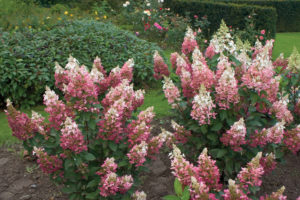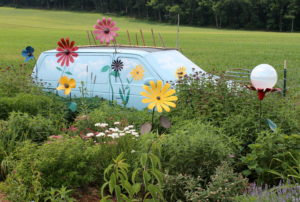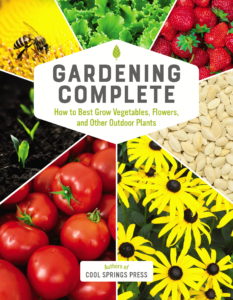Spring Derailed… but It’s Coming
March 27th, 2018
I’ll try not to rub it in when I admit that I was enjoying 70-degree days in the sunny Deep South when everyone here was dealing with the record-setting, first-day-of-spring snowstorm.
See my photo gallery on gardens of New Orleans and the Deep South
Though most of the snow was gone in a few days, the melting and resulting wet soil will set us back a bit on the start of the growing season. We were running a little slow even before that.
I don’t think we’ll see much serious or long-term damage. The spring snow was more insult than injury.
The two main issues were limbs that came down and evergreens that sagged from the weight of the snow.
If you had some branch breakage, eliminate ragged stubs by making sharp pruning cuts to just outside the little rings where branches attach to trunks or larger branches.
Don’t get up on a ladder to fix high damage. Call an insured professional to handle hangers-on and limit your cutting to what you can reach from the ground.
Evergreens that sagged should spring back to form as temperatures warm. If they don’t by April, use soft ties (old nylons are good) to pull branches back together. Tie them inside the foliage rather than around the perimeter so you don’t see this botanical straitjacketing.
Most perennial flowers are just getting started or still dormant. They should get back on track shortly – at worst with some browned leaves that can be pruned off as new ones grow.
Early planted vegetables such as peas, cabbage, onions, broccoli, spinach, and lettuce are very cold-hardy and won’t be fazed by the snow, other than a slight delay in development while they were under snow.
The buds of spring-blooming trees and shrubs also will continue on their way since they’re more sensitive to unusually cold temperatures than a temporary covering of snow. While a foot of snow is unusual for later March, temperatures in the upper 20s and low 30s are not.
As we drift back into the 40s, flower buds should open and bloom nicely, albeit a little later than some years.
Don’t worry about bulbs such as daffodils, hyacinths, crocuses, and tulips. Those are cold-hardier than most people think – especially the leaves.
The worst that should happen with those is that bulbs whose flowers opened and were pulled over from the weight of the heavy snow will finish their bloom drooping rather than looking up and out. Even that won’t cause any lasting damage.
See George’s video on not worrying about bulbs poking up early












